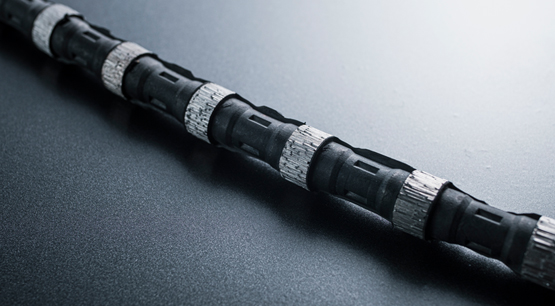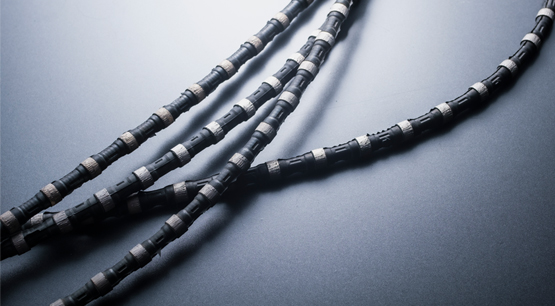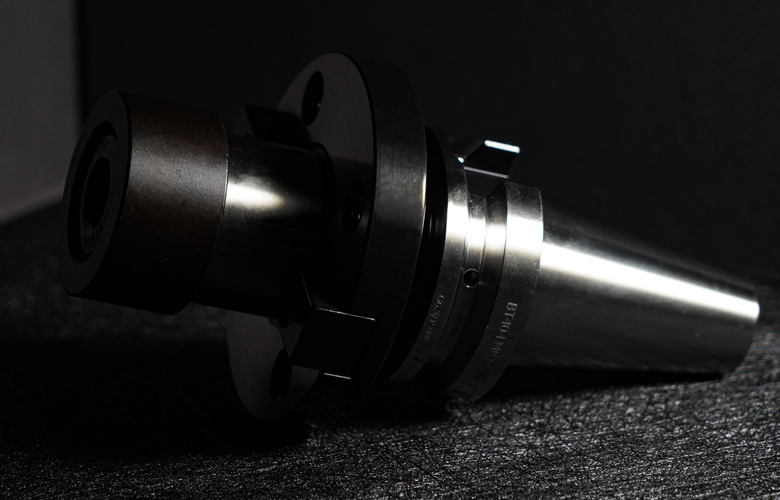A diamond wire saw is a cutting tool that utilizes diamonds as its cutting tool. It consists of a flexible rope made up of numerous small diamond particles, which are secured by a high-strength steel wire. Diamond wire saws are primarily used for cutting various hard materials such as stone, concrete, and metal. They are known for their efficiency, precision, and durability. These saws are widely used in stone processing, construction demolition, mining, and other industries. The cutting performance and lifespan of diamond wire saws depend on the quality of the diamonds and the design of the wire saw.
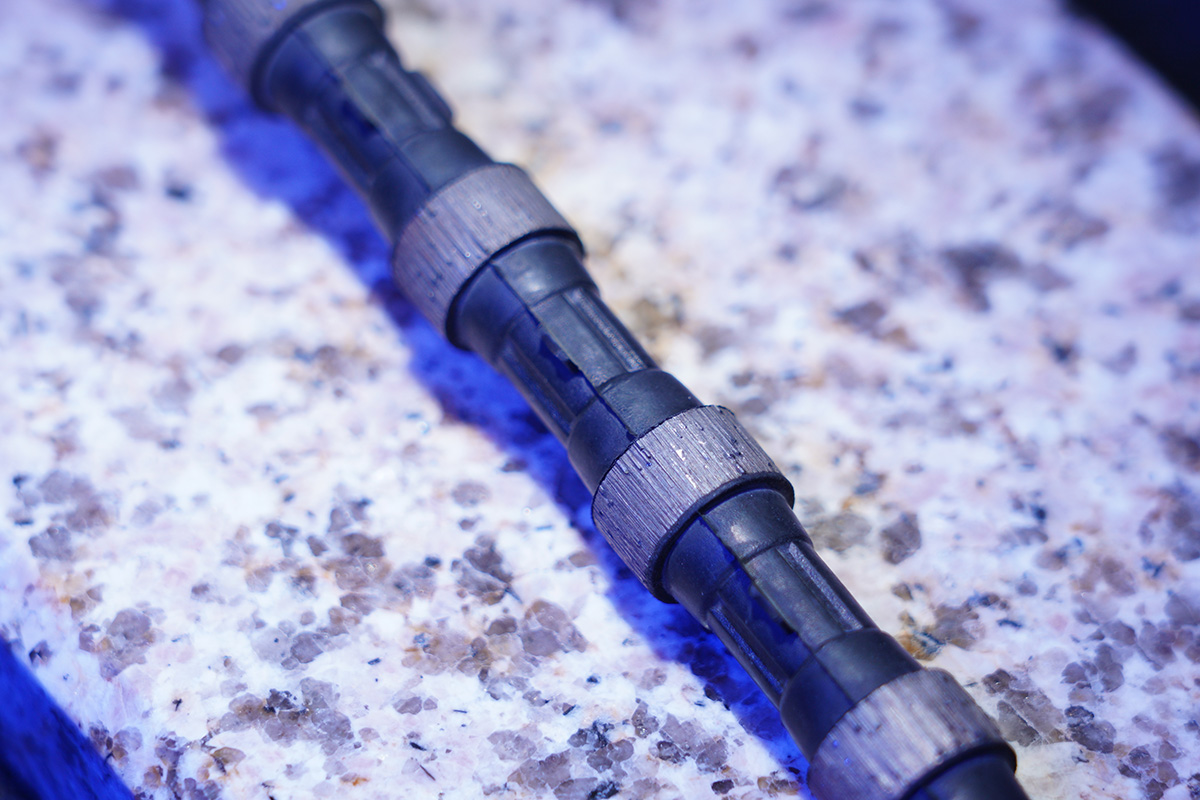
The beads of a diamond wire saw are typically composed of a mixture of diamond particles and metal powder. The ratio of diamonds to metal powder can be adjusted according to specific cutting requirements and application scenarios. In general, the diamond ratio in the wire saw beads is relatively high, typically ranging from 30% to 40%. The ratio of metal powder (usually copper powder) is lower, typically ranging from 10% to 20%. This ratio ensures that the wire saw beads have sufficient cutting ability and wear resistance. However, the specific ratio and formulation may vary among different manufacturers and products.
When the diamond ratio is higher, the performance of the wire saw is reflected in the following aspects:
1: Cutting Speed: A higher diamond ratio means a higher density of diamond particles in the wire saw, providing stronger cutting force and efficiency, resulting in faster cutting speed.
2: Wear Resistance: Diamond is one of the hardest substances on Earth and has excellent wear resistance. A higher diamond ratio indicates greater wear resistance of the wire saw, allowing it to maintain sharpness for a longer period and extending its lifespan.
3: Cutting Quality: Wire saws with a higher diamond ratio can provide more precise and smooth cutting surfaces, reducing fragmentation, chipping, and burrs during the cutting process, resulting in higher cutting quality.
4: Adaptability: Wire saws with a higher diamond ratio generally have a wider range of applications, able to handle different types of materials and cutting requirements, including materials with higher hardness and complex cutting tasks.
However, it's important to note that a higher diamond ratio does not necessarily mean it is always a better choice. When the diamond ratio is too high (exceeding 40%), the wire saw may encounter the following issues:
1: Rough Cutting: A higher diamond ratio can lead to rough and uneven cutting surfaces, visible cutting marks, and non-smooth edges.
2: Decreased Cutting Speed: A higher diamond ratio may result in decreased cutting efficiency, slowing down the cutting speed and requiring more time and effort to complete cutting tasks.
3: Reduced Lifespan: A higher diamond ratio increases the contact area between diamond particles, leading to accelerated wear and reduced lifespan of the wire saw.
4: Decreased Cutting Quality: A higher diamond ratio may result in the production of more fragments, chips, and burrs during the cutting process, affecting the cutting quality and preventing the attainment of smooth and precise cutting results.
5: Decreased Adaptability: A higher diamond ratio may reduce the adaptability of the wire saw to different materials, especially when dealing with soft or fragile materials, there may be a risk of excessive cutting or damage.
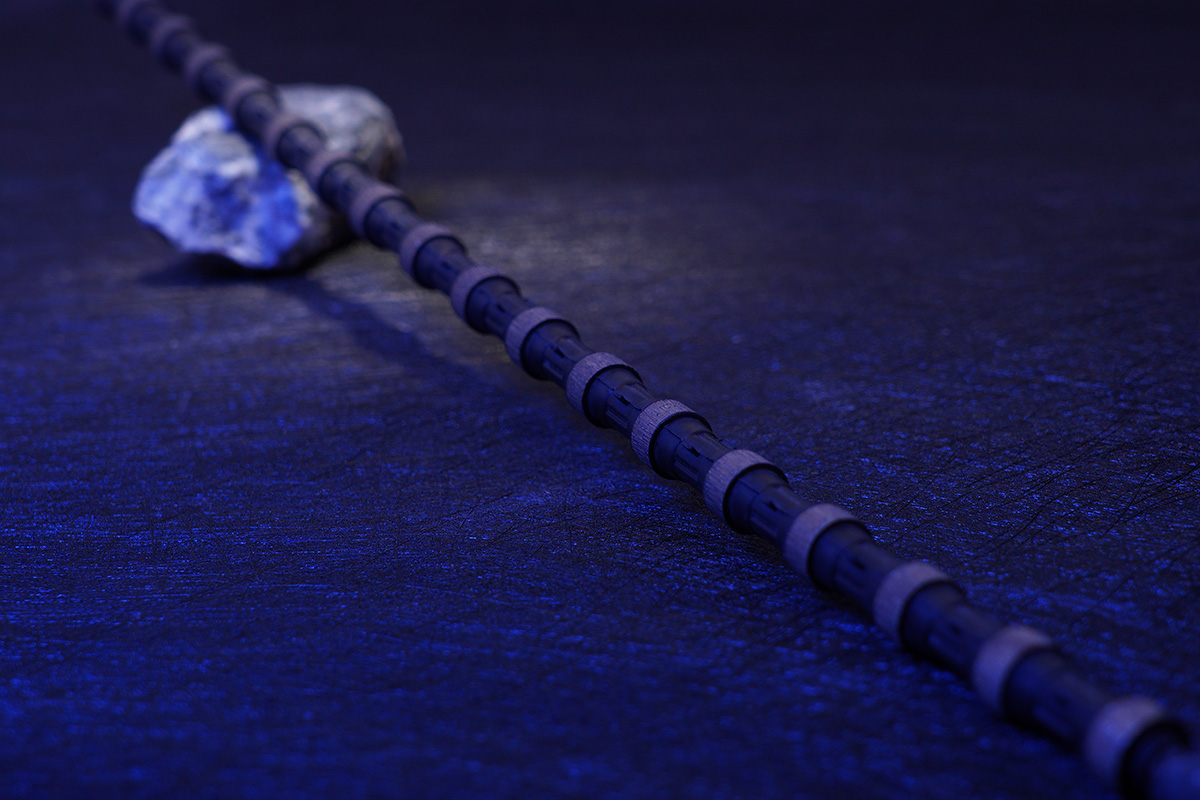
In reality, the selection of diamond ratio should be balanced based on specific application scenarios and material characteristics to achieve the optimal cutting performance and cost-effectiveness.




